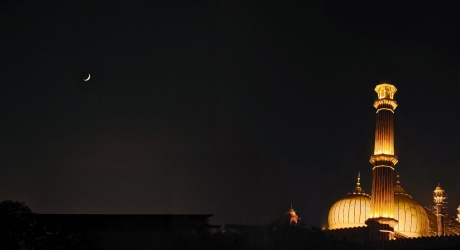The Times of India | Speaking Tree | July 29 2014
In every tradition there are festivals that are celebrated once a year. Perhaps the most important festival for Hindus is Deepavali; for Christians, Christmas and for Muslims, it is Eid al-Fitr. In terms of form these festivals seem to be different, but in terms of spirit they are all one and the same. What is that common spirit? It is to promote social harmony . That is, living together with the spirit of peace and brotherhood.
Festivals, more often than not, are born of historical tradition. As traditions of different communities are different, when these take shape, naturally the forms become shape, naturally the forms become different. However, the underlying spirit is the same.
It is not possible to bring about uniformity in form. However, form is a matter of external appearance, and a matter of external appearance, a it does not matter if there is difference in appearance. If in a family there are ten members, each may seem different in appearance, but as members of a family , they are one and the same. Similarly , festiv one and the same. Similarly , festivals may seem different but we ought to focus on the spirit; then we will discover that festivals represent the well-known principle of unity in diversity .
With reference to the festival of Eid al-Fitr (the literal meaning being`Feast of the Break ing of the Fast'), in an extended sense, we can say that Eid al-Fitr means breaking the bar riers and joining in celebration with groups of different traditions.
One of the greatest needs of mankind is the promotion of brotherhood among different groups of society . Today, educational institu tions and workplaces serve this task at the sec ular level. The same is also required at the reli gious level. Eid provides one such occasion. On the day of Eid people meet, greet each other, exchange gifts and sweets. Muslims ob serve two units of prayer in congregation.
t Among Muslims there is a practice called Sad; qa-e-Fitr, or Charity of Fitr, to extend monetat ry help to the poor, so that they too may join in the celebrations. Sadqa-e-Fitr is not merely a ritual; it has great divine reward. It provides an opportunity for philanthropy .
, One part of the congregational prayer per formed by Muslims on the day of Eid is that at the conclusion of the Eid prayer, when they turn f their heads on both sides and greet everyone by t saying, `Peace be upon you.' This practice im parts a universal flavour to this festival, promot ing universal love and compassion. ing universal love and compassion.
Eid or other festivals are basically a part of social culture. Festivals are not meant just for exchange of gifts.
They are more than that. They are meant for exchange of thought. Every such occasion is bound to create in teraction and discussion among people. Where there are interac tions and discussions, there is bound to be intellectual develop ment, leading to all kinds of devel opment in our lives.
In life, everyone is engaged in areas of selfinterest. This state of affairs produces a kind of distance between different groups. Eid and other festivals provide a remedy in that they help develop an environment where people may come closer to one another. On festivals people reunite, reconciliate, and maintain social harmony and solidarity .
Eid al-Fitr may seem to be a festival pertaining to a particular community but from a wider perspective it becomes a part of the celebrations of all communities worldwide.







